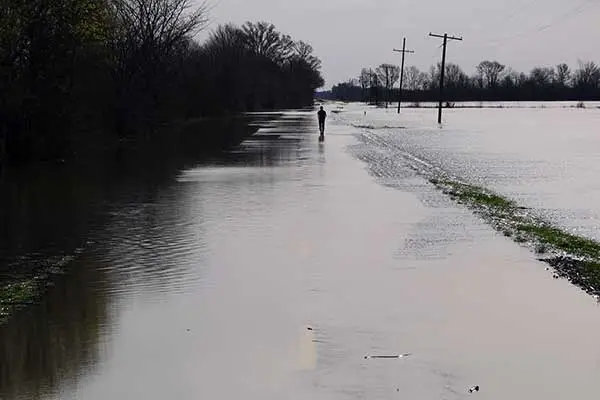Photo Credit: SeedWorld
Prices Being Paid for Illinois Farmland 'Unprecedented'
Unprecedented describes the land market throughout 2021 and into the early stages of 2022. We ended 2021 incredibly strong with lots of action and we sit here in early 2022 trying to decipher where the wild ride will end.”
These are the opening comments from Luke Worrell, AFM, ALC, Worrell Land Services, Jacksonville, Illinois, chair of the 2022 Land Values Conference. The annual event is sponsored by the Illinois Society of Professional Farm Managers and Rural Appraisers.
Citing increases being paid for farmland as high as 26 percent compared to a year ago, Worrell said, “Across the state we have seen meteoric rises in prices across all classifications of land. Leading the charge was Class A or ‘Excellent’ acreage, which saw a jump of 26 percent. It is a number that can take your breath away, but across the entire state the regions with Class A farmland experienced a rise of 30 percent from two years ago." Read More
Key Legendary Ranch from “Yellowstone” Sold for the First Time in 150 Years
The “Four-Sixes” ranch, as locals know it, sold for the first time since its founding in 1870, to “Yellowstone” co-creator and producer and Fort Worth native Taylor Sheridan.
Reports surfaced earlier this year that Sheridan, who filmed both “Yellowstone” and its 10-episode prequel “1883” at the 6666 Ranch, was leading a group of investors to buy the rural Texas landmark.
“The final purchase price of the ranches remains undisclosed, but it’s publicly known the ranches were collectively listed for sale at $341 million just for the real estate itself,” said Bell. “At over 266,000 acres, this is one of the most significant ranch purchases in recent U.S. history." Read More
Push for CRP Land Release
Key agribusiness groups and the American Farm Bureau Federation on Wednesday urged Agriculture Secretary Tom Vilsack to allow holders of contracts under the Conservation Reserve Program, which idles land, to plant crops on those lands to increase supply during the Ukraine war and to make sure that only "environmentally sensitive" land is enrolled following the CRP signup that ended on March 11. Read More
Nebraska Land Values Jump 16%
Farmland values in Nebraska are at historic levels. With a statewide average of $3,360 per acre, values are up 16% from the prior year, according to the preliminary findings of the University of Nebraska–Lincoln’s 2022 Farm Real Estate Market Survey.
That marks the largest increase in the market value of agricultural land in the state since 2014 and is the highest non-inflation-adjusted statewide land value in the history of the survey.
Higher commodity prices and historically low interest rates lead to the robust real estate sales market, according to the survey. Participants also reported those purchasing land looked to the asset as a hedge against inflation and economic uncertainty. Read More
To Avert Food Shortage, U.S. and Allies Will Boost Food Aid and Grow More
Global food shortages are a real possibility as a result of the Russian invasion of Ukraine, President Biden told reporters while meeting with allies in Brussels on Thursday. Western leaders, including European Commission President Ursula von der Leyen, joined Biden in saying they would step up their hunger-relief programs and encourage their farmers to grow more food.
“Yes, we did talk about food shortages. And it’s going to be real,” said Biden during a news conference. “The price of these sanctions is not just imposed on Russia, it’s imposed upon an awful lot of countries as well, including European countries and our country as well." Read More
Farmers Eye Evolving Carbon Markets, Seed Companies Take Note
Anyone who follows environmental news has heard that the world needs to reduce carbon emissions dramatically to offset the impact of climate change. Enter carbon markets, where stewards of smart practices can produce less, or even pull carbon from the atmosphere to benefit the environment at large.
The 30,000-foot view for farmers and agriculturalists is companies and producers who use sustainable practices and can measure carbon benefits can earn money for their efforts. Their carbon offsets are tracked, quantified (called carbon credits) and connected through a sort-of broker to sell on a carbon exchange to companies who produce more carbon and need to offset their emissions. Read More






